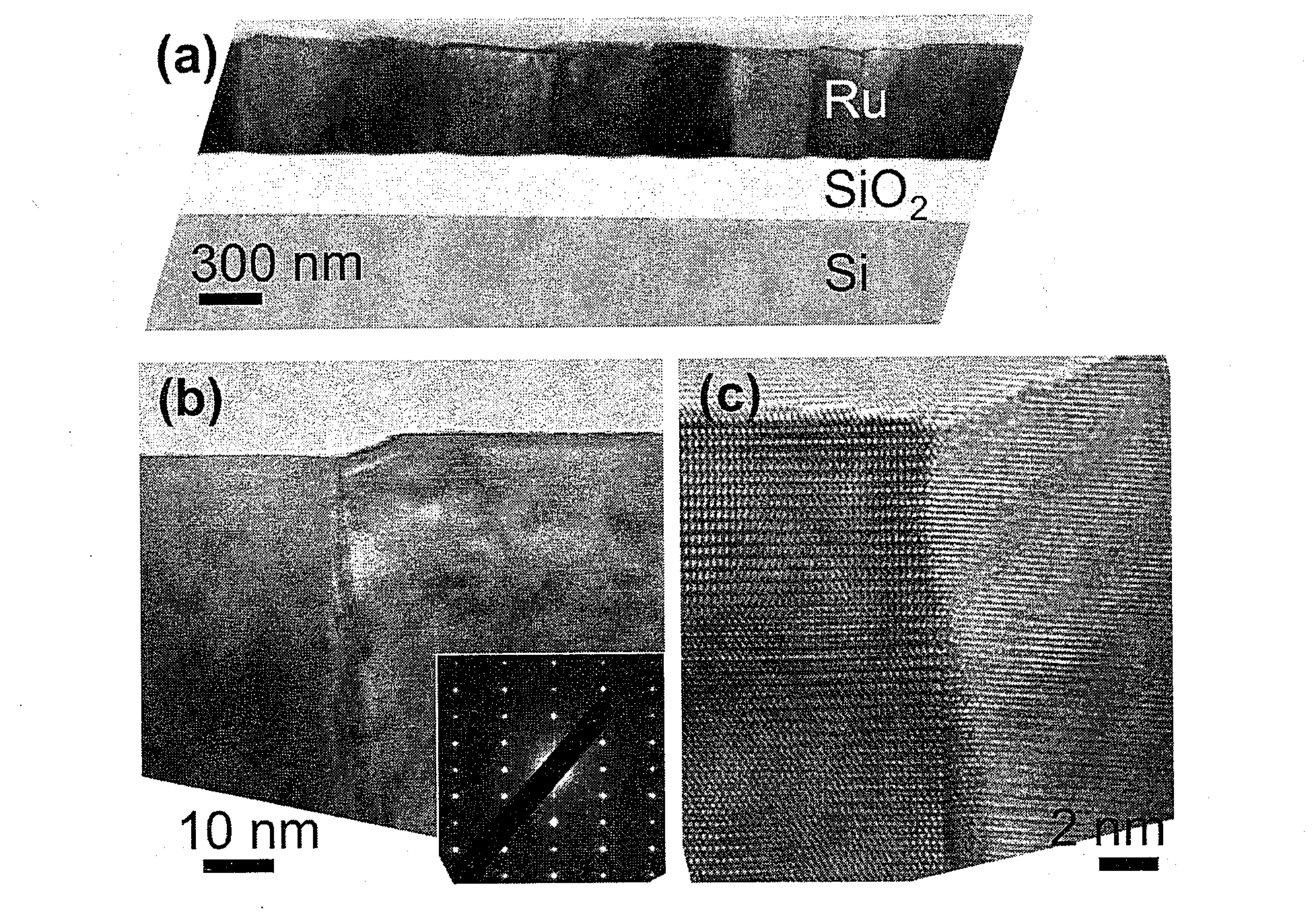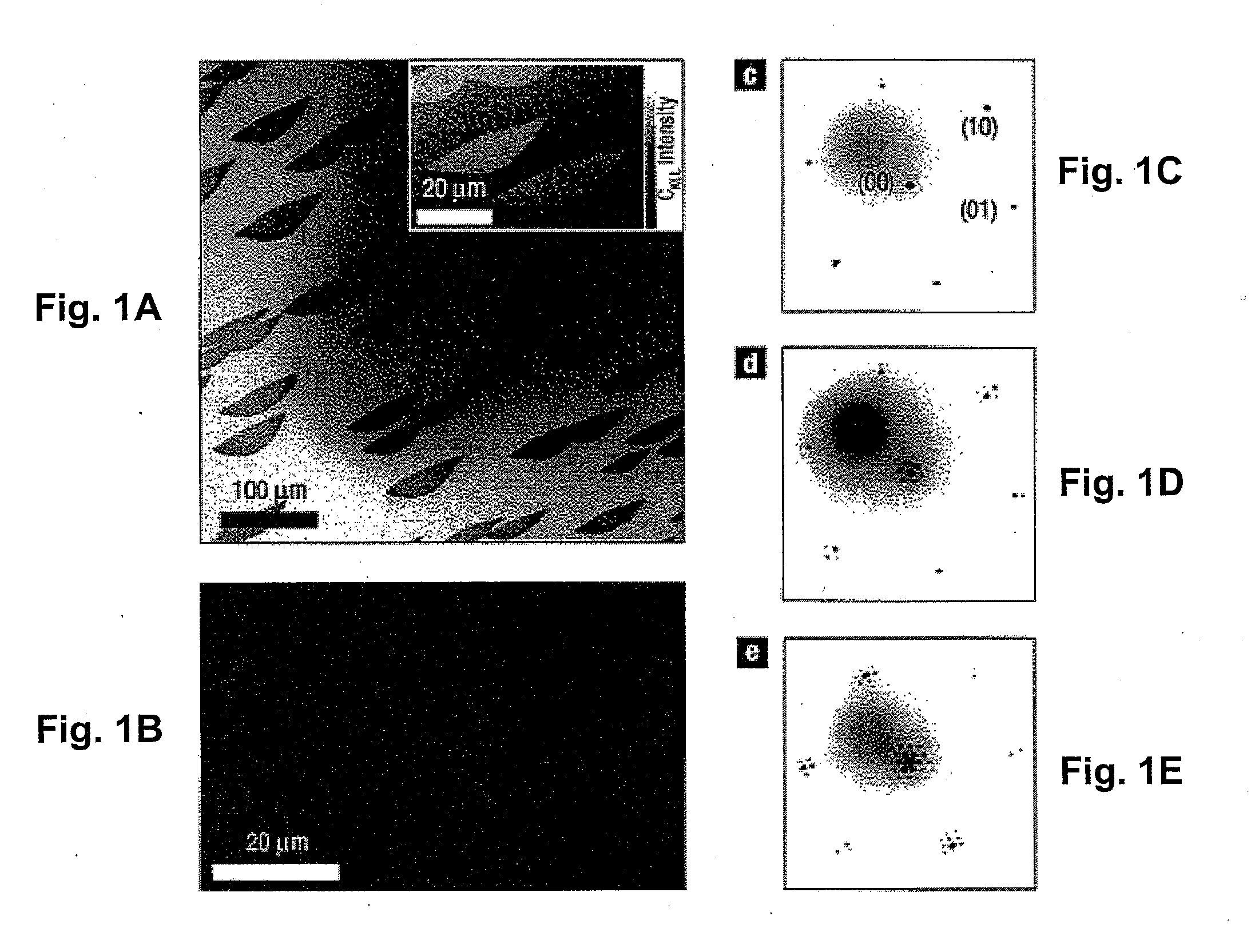Monolayer and/or Few-Layer Graphene On Metal or Metal-Coated Substrates
a graphene and metal coating technology, applied in the direction of metal/metal-oxide/metal-hydroxide catalysts, conductive materials, particle separator tubes, etc., can solve the problems of inability to efficiently and reproducibly form large (>100 m) single crystal domains in quantities sufficient for large-scale fabrication, and the formation of graphene domains with uniform thickness and length scales sufficient for practical applications remains a challeng
- Summary
- Abstract
- Description
- Claims
- Application Information
AI Technical Summary
Benefits of technology
Problems solved by technology
Method used
Image
Examples
exemplary embodiment 1
I. Exemplary Embodiment 1
Growth on Single Crystal Substrates
[0096]An exemplary method of forming graphene will now be described in detail. It is to be understood, however, that graphene growth is not limited to the method as described below, but may be accomplished by variations of the present method or by other, equivalent methods. A 99.999% pure Ru(0001) substrate with a miscut of 0.1° was initially cleaned ex situ by ultrasonication in acetone and then isopropyl alcohol followed by a 20 min rinse in deionized water. The substrate was then introduced into an UHV process chamber by means of a suitable load-lock and sample transfer system. A suitable choice of process chamber may be located within an Elmitec LEEM V field-emission LEEM with a sample stage capable of attaining temperatures ranging from 200 K to over 1500 K at pressures from UHV (≦Ton) to over 10−6 Torr. The LEEM may be equipped for in situ sample analysis using bright / dark field imaging, photoexcitation electron micro...
exemplary embodiment 2
II. Exemplary Embodiment 2
Growth on Planar Thin Films
[0118]Polycrystalline Ru films with thicknesses ranging from 50 to 500 nm were grown on well degassed SiO2(300 nm) / Si substrates by rf magnetron sputtering of a Ru target (99.95% purity) in an UHV system with a base pressure of 2×10−10 torr. The substrate temperature during the Ru film deposition was 700° C. and the growth rate 0.06 nm / s. Following the growth, the Ru films were annealed at 950° C. in UHV for 20 min. Graphene epitaxy on Ru films was performed as on Ru(0001) single crystals, described in detail above. Briefly, the Ru thin films were enriched with interstitial C by exposure to ethylene (5×10−7 torr) at 950° C., followed by slow cooling in UHV to 550° C. The gradual lowering of the temperature reduces the C solubility in the Ru film and causes C segregation, driving graphene nucleation and growth at the surface. The morphology of the Ru films and the graphene layer were investigated in situ by STM in a microscope atta...
exemplary embodiment 3
III. Exemplary Embodiment 3
Growth on Non-Planar Thin Films
[0125]Arrays of three-dimensional geometric indents with different shapes—inverted tetrahedrons, square pyramids, and hemispheres—were designed and micromachined in fused silica substrates by focused ion beam (FIB). FIGS. 9A through 9C are micrographs of 3D geometrical indented patterns prepared by FIB milling. In FIGS. 9A and 9B the images were taken in a scanning electron microscope at a tilt of 52° with respect to the horizontal axis; the scale bars correspond to 5 μm. The left panel of FIG. 9A shows an inverted tetrahedron while the right panel shows an inverted square pyramid. Both were milled on a silicon substrate. Similar results, not shown, were obtained on fused silica substrates. FIG. 9B shows an inverted spherical cap milled in a fused silica substrate. The grain structure at the flat surface corresponds to the Au coating needed to reduce charging effects during milling. FIG. 9C is an optical micrograph of an arra...
PUM
| Property | Measurement | Unit |
|---|---|---|
| radius | aaaaa | aaaaa |
| TM | aaaaa | aaaaa |
| TM | aaaaa | aaaaa |
Abstract
Description
Claims
Application Information
 Login to View More
Login to View More - R&D
- Intellectual Property
- Life Sciences
- Materials
- Tech Scout
- Unparalleled Data Quality
- Higher Quality Content
- 60% Fewer Hallucinations
Browse by: Latest US Patents, China's latest patents, Technical Efficacy Thesaurus, Application Domain, Technology Topic, Popular Technical Reports.
© 2025 PatSnap. All rights reserved.Legal|Privacy policy|Modern Slavery Act Transparency Statement|Sitemap|About US| Contact US: help@patsnap.com



